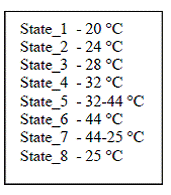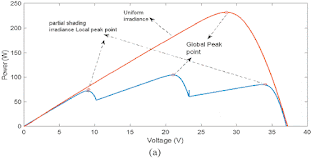ABSTRACT:
Different technologies and resources are utilized to
provide electricity access for the rural population around the world. Single
wire earth return (SWER) line gets prominent attention around the globe to
electrify low load profile customers and remote load like telecom base stations
by extending from the nearby medium grid. SWER distribution system is designed
by tapping from medium voltage distribution line using an isolation
transformer. Unlike other distribution systems, the secondary side of a
transformer has an only single line with dedicated perfect grounding system.
SWER lines are considered as a cost-effective solution, compared to the three phase
grid extension by electric utility companies. Since line route is mostly in
rural areas with different geographical topologies, natural and human-made
faults are inevitable scenarios on the line. According to a preference of
utilities and geographical locations, SWER lines are equipped with over current
relay, surge arrestors or reclosers to isolate faulty line during the fault.
The two main challenges on SWER line protection are to back up existing over current
protection relay when it fails to clear the fault and to locate the location of
fault for line maintenance. Technicians patrol up to hundreds of km along SWER
line to locate a fault. This activity will be inefficient and time-consuming
way of locating the fault. In this paper, we model and simulate the impedance
distance relay to back up existing protection system and locate the fault. Our
model successfully backs up definite time over current (DTOC) relay for a
single line to ground (SLG) faults across the line. Consequently, fault
locator-block locates the faulty line position.
KEYWORDS:
1.
SWER
2.
Rural Electrification
3.
Impedance relay
4.
Fault location
5.
Protection
SOFTWARE: MATLAB/SIMULINK
BLOCK DIAGRAM:
Fig.1.Impedance relay simulation model
EXPECTED SIMULATION RESULTS:
Fig.2.Fault cleared by DTOC
Fig.3.Fault cleared by Zone-1 relay
Fig.4.Fault cleared by zone -2 relay
CONCLUSION:
In
this paper, the two challenges on SWER line, backup protection of DTOC relay
and fault location during fault are addressed. An impedance relay is proposed
to backup DTOC relay and to locate faults on SWER line.The simulation is done
on MATLAB/SIMULINK on each step of 15km from relay point to the entire line. A
fault is simulated at 0.4 s and during the inception of fault, the proposed
impedance relay managed to clear the fault according to the intentional time
delay set between each zone when DTOC fails to operate. Fault locator-block
also measures the fault location by considering fault impedance during a fault.
The model can measure a SWER line fault location for a fault impendence of 5Ω
and below with less than 3% errors. Whereas, fault impedance compensation is required
for a fault impedance greater than 10Ω to achieve better result with minimum
error percentage.
REFERENCES:
[1]
P. Cook, "Infrastructure, rural electrification and development," Energy
Sustinable Development , pp. 304-313, 2011.
[2]
IEA, "Iea.org/sdg/electricity/," IEA, [Online]. Available: https://www.iea.org/sdg/electricity/.
[Accessed 10 03 2019].
[3]
ESAMP, "Reducing the Cost of Grid Extension for Rural Electrifcation,"
The International Bank for Reconstruction and Development 227.200, USA, 2000.
[4]
L.MANDENO, "RURAL POWER SUPPLY, ESPECIALLY IN BACK COUNTRY AREAS.,"
in Proceedings of the New Zealand Institution of Engineers, Vol. 33 (1947),
1947.
[5]
P. Grad, "Energy Source & Distribution," 2014, 18 May 2014. Available:
https://www.esdnews.com.au/swer-still-going-strong/.
[Online] [Accessed 11 March 2019].


































